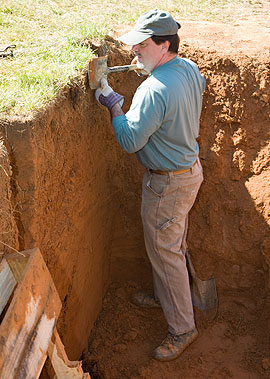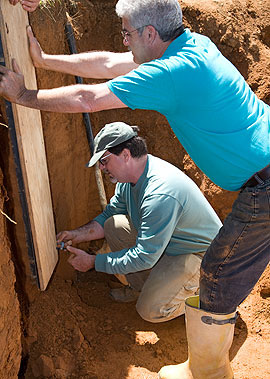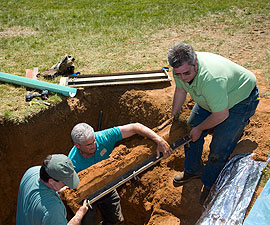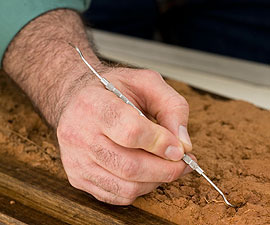Making a Soil Monolith
A monolith, or vertical slice from topsoil down to subsoil, preserves a soil’s colors and layered horizons in position. Scientists make monoliths of the important soils in their region and use them in teaching.

- Step 1
- In the field, scientists dig a pit about 6 feet deep, keeping one face a flat vertical plane.
- Donald Hurlbert, Smithsonian Institution

- Step 2
- Then, they press a mounting board with a bed of nails into the pit face and dig in about 6 inches around the board’s edges.
- Donald Hurlbert, Smithsonian Institution

- Step 3
- As they pull the board back, they use strips of cloth to secure the soil to the board.
- Donald Hurlbert, Smithsonian Institution

- Step 4
- Back at the lab, the soil is “picked” away to leave about 1 or 2 inches of soil with a natural surface, and then coated with glue or acrylic floor wax to “fix” it to the board.
- Donald Hurlbert, Smithsonian Institution
